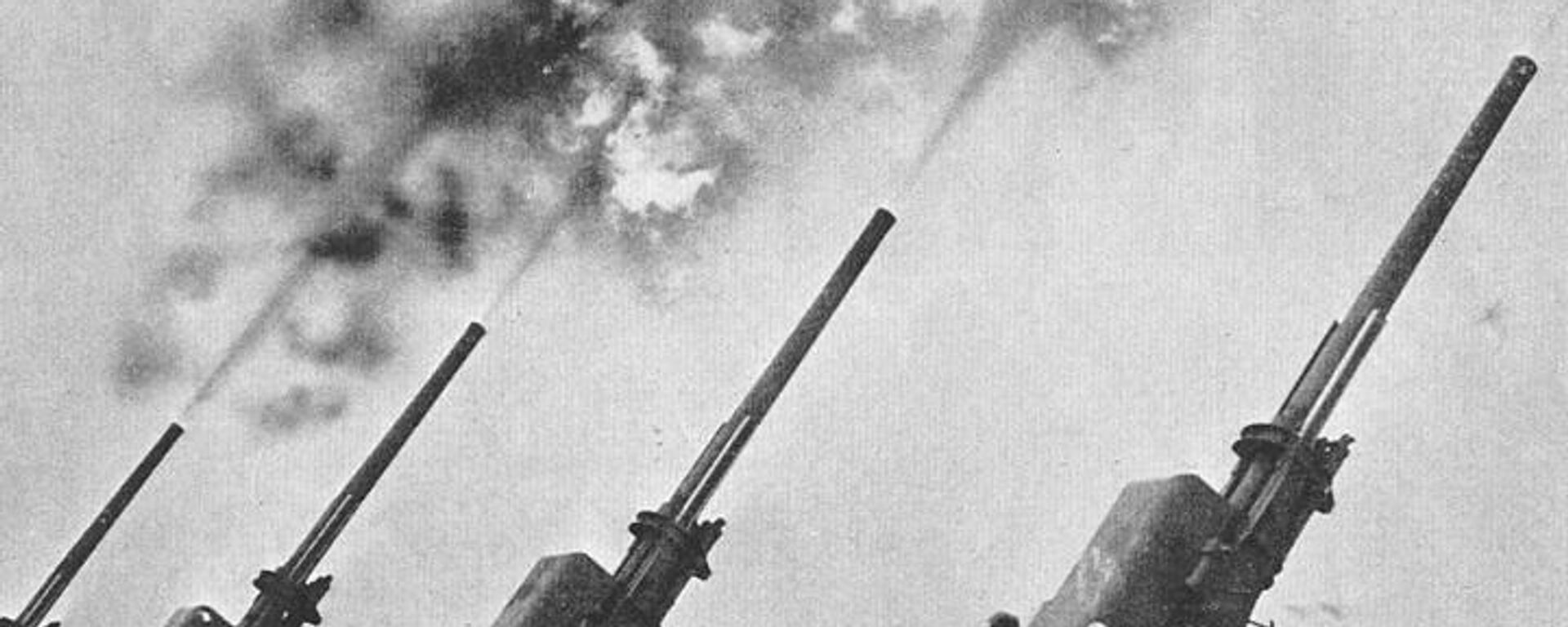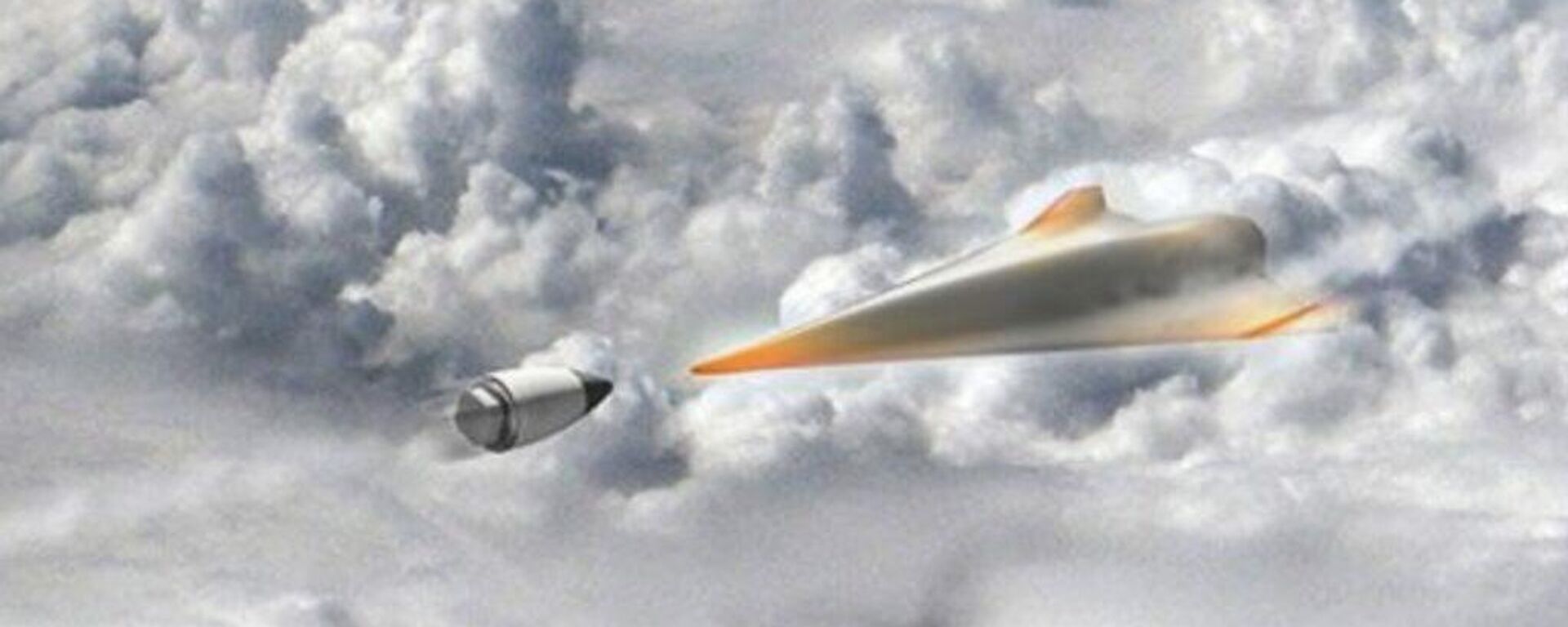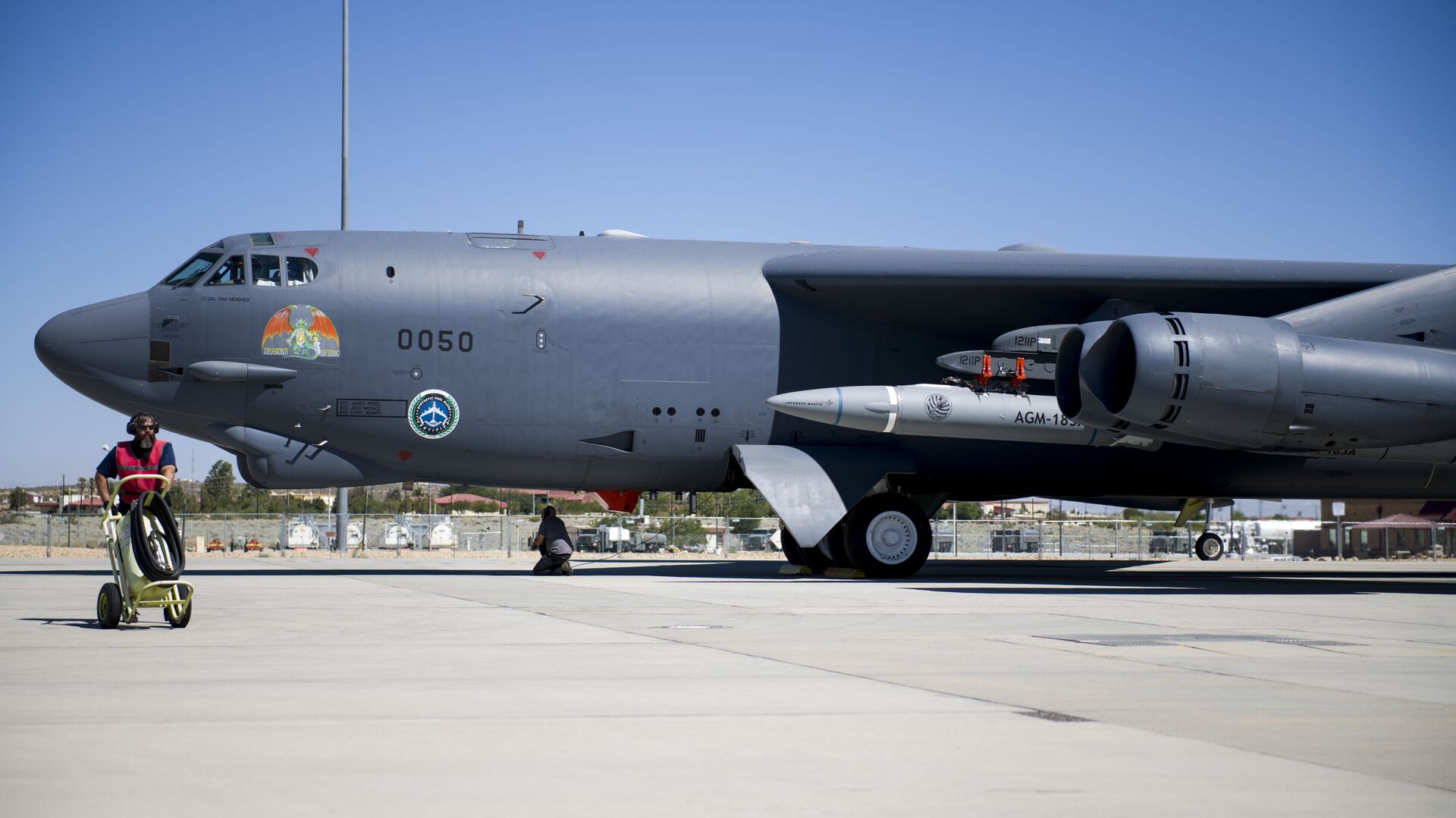https://sputnikglobe.com/20220308/third-times-not-the-charm-pentagon-sweating-bullets-as-hypersonic-tests-fail-three-times-in-a-row-1093684981.html
Third Time’s Not the Charm: Pentagon Sweating Bullets as Hypersonic Tests Fail Three Times in a Row
Third Time’s Not the Charm: Pentagon Sweating Bullets as Hypersonic Tests Fail Three Times in a Row
Sputnik International
Russia and China deployed their first hypersonic capabilities in 2017 and 2019, respectively, with other nations, including North and South Korea, France... 08.03.2022, Sputnik International
2022-03-08T11:43+0000
2022-03-08T11:43+0000
2022-12-12T18:26+0000
america
hypersonic
missile
testing
https://cdn1.img.sputnikglobe.com/img/07e4/08/0a/1080124211_0:0:3641:2048_1920x0_80_0_0_0de77e2d7b5166564c73674b400e050f.jpg
Lockheed Martin’s testing of a new air-launched hypersonic missile for the Air Force suffered three failed tests in a row, leading to concerns in the Pentagon and Congress that it won’t meet a deadline to begin production of a combat-ready hypersonic weapons system by 30 September.The Air-Launched Rapid Response Weapon (ARRW) is a boost glide hypersonic missile that’s expected to be fielded aboard B-52H Stratofortress and B-1 Lancer strategic bombers, and its specs include a 1,600 km operational range and a maximum flight speed of about Mach 20. It’s also been reported that the ARRW could also be carried by an F-15 fighter jet.Three tests of the system conducted in April, July and December ended in failure, leading to concerns that the missile may not be ready by the September deadline. Representative Jim Cooper, chairman of the House Subcommittee on Strategic Forces, also expressed doubts about the programme. “The US has a lot of catching up to do with China. It will take much more than a September 30 press release to regain the lead we’ve squandered since the 1970s,” he said.The lawmaker stressed that the US’s hypersonics programmes in general need more “funding, engineering excellence and rapid testing to begin parity.”The Air Force assured in a statement that “it is still possible” for early operational capability to be reached by the deadline, “provided future flight testing concludes as per the current plan.” Despite the failure of previous testing, the Air Force maintains that the test programme “successfully demonstrated a number of first-time events.”The Pentagon froze plans to order the first 12 ARRW missiles in January in light of the test failures, stressing that it would “not award a production contract without a Production Readiness Review and a successful All Up Round Test Flight.”This is FineThe fourth and fifth tests of the ARRW evaluating its booster motor are expected to take place by the end of June, with at least $1.4 billion expected to be pumped into the project before “early operational capability” is achieved (up from previous cost estimates of $480 million). More testing is expected between July and September of a fully operational missile.Along with the ARRW, US defence contractors are engaged in the development of at least six other hypersonic systems, including an Army-Navy Common Hypersonic Glide Body (CHGB), a Navy Intermediate Conventional Prompt Strike (CPS) weapon, a Long-Range Hypersonic Weapon (LRHW) for the Army, the Hypersonic Conventional Strike Weapon (HCSW) and Hypersonic Air-Breathing Weapon Concept (HAWC), both for the Air Force, and DARPA’s Operational Fires programme.The Army made headlines when it announced that it would begin fielding the CHGB last year, receiving the first components of its first CHGB system in October, including a battery, operations center, transporter-erector launchers, trucks and trailers. However, crucially, the hypersonic rounds for the system were not delivered, and are not even expected to be produced until fiscal year 2023.Russia became the first country in the world to field a modern hypersonic weapons system, putting the Kh-47M2 Kinzhal nuclear-capable aero-ballistic air-to-ground missile into service in December 2017. The system’s existence was revealed in a presentation by President Vladimir Putin in March 2018.China followed suit by making the DF-ZF hypersonic glide vehicle operational in October 2019.Russia was able to get a head start on its hypersonics programme by dusting off Soviet-era research in the early 2000s, after the United States unilaterally pulled out of the Anti-Ballistic Missile Treaty of 1972 – which placed severe limitations on the creation of anti-ballistic missile defence systems.Russia carried out a dozen test-firings of the 3M22 Zircon (alternatively spelled ‘Tsirkon’) scramjet-powered anti-ship hypersonic missile in December 2021, and in February drilled its entire nuclear triad, firing Kinzhal, Yars ICBM, sub-launched Sineva, Kalibr and Zircon missiles at ranges in northern and eastern Russia.
https://sputnikglobe.com/20220208/dust-defense-us-academics-pitch-21st-century-flak-to-counter-hypersonic-weapons-1092862818.html
https://sputnikglobe.com/20220205/us-admiral-discloses-americas-sole-means-of-defence-against-hypersonic-missiles-1092780432.html
https://sputnikglobe.com/20220219/russian-aerospace-force-successfully-launches-kinzhal-hypersonic-missiles-during-drills-1093174539.html
Sputnik International
feedback@sputniknews.com
+74956456601
MIA „Rossiya Segodnya“
2022
News
en_EN
Sputnik International
feedback@sputniknews.com
+74956456601
MIA „Rossiya Segodnya“
Sputnik International
feedback@sputniknews.com
+74956456601
MIA „Rossiya Segodnya“
america, hypersonic, missile, testing
america, hypersonic, missile, testing
Third Time’s Not the Charm: Pentagon Sweating Bullets as Hypersonic Tests Fail Three Times in a Row
11:43 GMT 08.03.2022 (Updated: 18:26 GMT 12.12.2022) Russia and China deployed their first hypersonic capabilities in 2017 and 2019, respectively, with other nations, including North and South Korea, France, Japan Australia and India also researching the new class of weaponry. The United States has over half-a-dozen hypersonic weapons systems in development, but none have been fielded.
Lockheed Martin’s testing of a new air-launched hypersonic missile for the Air Force suffered three failed tests in a row, leading to concerns in the Pentagon and Congress that it won’t meet a deadline to begin production of a combat-ready hypersonic weapons system by 30 September.
The Air-Launched Rapid Response Weapon (ARRW) is a boost glide hypersonic missile that’s expected to be fielded aboard B-52H Stratofortress and B-1 Lancer strategic bombers, and its specs include a 1,600 km operational range and a maximum flight speed of about Mach 20. It’s also been reported that the ARRW could also be carried by an F-15 fighter jet.
Three tests of the system conducted in April, July and December ended in failure, leading to concerns that the missile may not be ready by the September deadline.
A spokesperson for the Pentagon’s research and engineering department
told Bloomberg that while its director was “supportive of the Air Force’s aggressive efforts to accelerate development,” the 30 September deadline was a “very aggressive schedule.”
Representative Jim Cooper, chairman of the House Subcommittee on Strategic Forces, also expressed doubts about the programme. “The US has a lot of catching up to do with China. It will take much more than a September 30 press release to regain the lead we’ve squandered since the 1970s,” he said.
The lawmaker stressed that the US’s hypersonics programmes in general need more “funding, engineering excellence and rapid testing to begin parity.”
“Even then, I worry that the US doesn’t even know how to catch up, particularly given the repeated failures [that] we’ve had to date on components that should not be technically challenging,” Cooper said.
The Air Force assured in a statement that “it is still possible” for early operational capability to be reached by the deadline, “provided future flight testing concludes as per the current plan.” Despite the failure of previous testing, the Air Force maintains that the test programme “successfully demonstrated a number of first-time events.”
The Pentagon froze plans to order the first 12 ARRW missiles in January in light of the test failures, stressing that it would “not award a production contract without a Production Readiness Review and a successful All Up Round Test Flight.”

8 February 2022, 21:59 GMT
Lockheed Martin, meanwhile, indicated that nothing was wrong and that development is proceeding as planned. “The Joint government and Lockheed Martin team closely reviews every test to ensure quality measures remain in place,” company spokesperson Cristina Vite said. The missile “continues to gain significant technical maturity while accomplishing many first-time milestones,” the spokesperson added.
The fourth and fifth tests of the ARRW evaluating its booster motor are expected to take place by the end of June, with at least
$1.4 billion expected to be pumped into the project before “early operational capability” is achieved (up from previous cost estimates of $480 million). More testing is expected between July and September of a fully operational missile.
Along with the ARRW, US defence contractors are engaged in the development of
at least six other hypersonic systems, including an Army-Navy Common Hypersonic Glide Body (CHGB), a Navy Intermediate Conventional Prompt Strike (CPS) weapon, a Long-Range Hypersonic Weapon (LRHW) for the Army, the Hypersonic Conventional Strike Weapon (HCSW) and Hypersonic Air-Breathing Weapon Concept (HAWC), both for the Air Force, and DARPA’s Operational Fires programme.
The Army made headlines when it announced that it would begin fielding the CHGB last year, receiving the first components of its first CHGB system in October, including a battery, operations center, transporter-erector launchers, trucks and trailers. However, crucially, the hypersonic rounds for the system
were not delivered, and are not even expected to be produced until fiscal year 2023.

5 February 2022, 17:58 GMT
Russia became the first country in the world to field a modern hypersonic weapons system, putting the Kh-47M2 Kinzhal nuclear-capable aero-ballistic air-to-ground missile into service in December 2017. The system’s existence was revealed in a presentation by President Vladimir Putin in March 2018.
China followed suit by making the DF-ZF hypersonic glide vehicle operational in October 2019.
Russia was able to get a head start on its hypersonics programme by dusting off Soviet-era research in the early 2000s, after the United States unilaterally pulled out of the Anti-Ballistic Missile Treaty of 1972 – which placed severe limitations on the creation of anti-ballistic missile defence systems.
Russia carried out a dozen test-firings of the 3M22 Zircon (alternatively spelled ‘Tsirkon’) scramjet-powered anti-ship hypersonic missile in December 2021, and in February drilled its entire nuclear triad, firing Kinzhal, Yars ICBM, sub-launched Sineva, Kalibr and Zircon missiles at ranges in northern and eastern Russia.

19 February 2022, 11:16 GMT




